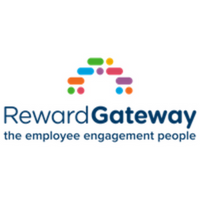5 ways to jump on the right wellbeing bandwagon

Fantastic, but what happens if you get on the wrong bandwagon (e.g. only covers one aspect of wellbeing and/or don’t address or meet the needs of your employee’s personal choices)? You’ll not only end up in the wrong place, but you could waste time and money getting to where you need to be.
Regardless of whether you have money in your wellbeing budget or not, you still should and can jump on the wellbeing bandwagon. These days there are so many resources to make wellbeing surprisingly easy to put in place, many costing absolutely nothing but a bit of time and imagination to roll out.
To help us figure out how to get on the right bandwagon, I chatted with my colleague Lucy Tallick, Reward Gateway’s head of wellbeing. Lucy and her team are developing RG’s wellbeing products, and she’s been a great source of information and inspiration for me as I develop the wellbeing strategy and programmes for my employees at RG.
Here are her five tips:
1) Align to your business and HR objectives
Studies have shown that wellbeing has an important role to play in achieving business and HR objectives such as employee engagement, productivity and reduced absenteeism. Here are a few statistics appearing in an infographic Lucy shared with me:
- 69% of the world isn’t doing enough physical activity
- The cost of absenteeism is costing companies £14 billion a year
- The cost of presenteeism (coming to work sick) is costing companies £15 billion a year
For this reason, the first questions you need to ask yourself are: What exactly am I trying to achieve and what is the ROI (return on investment) and/or VOI (value on investment)? Which bandwagon do I want to jump on?
Picture where your business and your HR strategy are trying to take you, and create a wellbeing strategy and programmes to support these overall goals. Think of these as the supplies you load onto your bandwagon, helping you in the short-term by supporting you throughout your journey, and in the long-term by helping you be successful when you get to your final destination.
2) Align to your culture and values
The next question to tackle is: How can I create a wellbeing strategy and programmes that are ‘right’ for my company? Those that work within my company’s cultural framework and align with my values? This is just as important as setting the direction and objectives. Without this lens, your employees will be more likely to jump off your bandwagon.
For example, when I worked at a pharmaceutical company we had a fairly in-depth health assessment as part of our wellbeing programme. This made sense as it fit the culture of the company given both the industry and the approach to supporting employees.
My current company is a high-tech company with a very different culture and demographics, so if I rolled out this same health assessment product I am 100% sure that it would not work. As Lucy told me ‘Align your wellbeing strategy with your core culture and develop initiatives that add to, not take over, your employees’ habits.’
3) Make it comprehensive
A wellbeing strategy and programmes need to be comprehensive to be effective and achieve their objectives. They need to cover what Lucy calls the key pillars of wellbeing - physical, mental and financial, and need to consider these three principles:
- Be preventative - proactively help employees get/stay healthy and happy.
- Be personal - there is no one size fits all solution, it must be unique to everyone.
- Be inclusive - everyone needs a solution regardless of location, role or demographic.
I’ve seen too often companies put in place a great wellbeing initiative such as discounted gym memberships, which although a great benefit, only meet the needs of those employees who actually go to the gym (which is only 14% of the UK population). We need to consider and address all of the wellbeing pillars and principles, and create a comprehensive approach to meet the needs of each and every employee.
4) Make it sustainable
As with any reward programme, it’s absolutely critical to make sure that what we put in place is effective not just in the short-term but in the long-term, so will last the test of time. Going back to the bandwagon, we don’t want to jump on one that will fall apart and be stuck walking, do we?
As Lucy told me ‘wellbeing initiatives are not about crisis management and fixing problems. They’re about helping your employees live better and feel better by facilitating and supporting them to make small sustainable lifestyle changes that really stick and make a big difference.’
5) Jump on the bandwagon
My last tip is a simple one, which is to jump on the bandwagon. Whether it’s in a big or small way, spending no money or a lot of money, do something and don’t wait. I recently put in place two new wellbeing benefits at my company to help me jump on the wellbeing bandwagon.
The first was a wellbeing pot each employee was given so they could select the activity(s) of their choice. It did cost some money, but was minimal as I reallocated money from changing another benefit. The second was a benefit which gives nationwide discounted access to gyms, exercise classes and home fitness equipment, so a comprehensive option for physical wellbeing. This cost me absolutely nothing, as the platform is available at no cost.
Another easy win which costs almost nothing is an ad hoc wellbeing programme we’re doing on the 10th October for World Mental Health Day. We’re posting information on our global communications portal and holding lunchtime learning sessions in some of our offices.
One office is having origami lessons and another mindfulness, all being run by our wellbeing warriors who have knowledge/expertise in these areas. This is a great way to get interest and momentum in your company’s wellbeing programme and keep your employees on the bandwagon.
And finally, as Arianna Huffington said in her book, Thrive, “wellbeing is not an option anymore”, not to individuals and not to companies. We all need to figure out where we need to go with our wellbeing initiatives, jump on the right bandwagon and bring with us exactly what we need to create a meaningful and engaging wellbeing programme for our employees.
Debra Corey is group reward director at Reward Gateway.
This article was provided by Reward Gateway.
Supplied by REBA Associate Member, Reward Gateway
We help the world's leading companies with an employee engagement platform.







